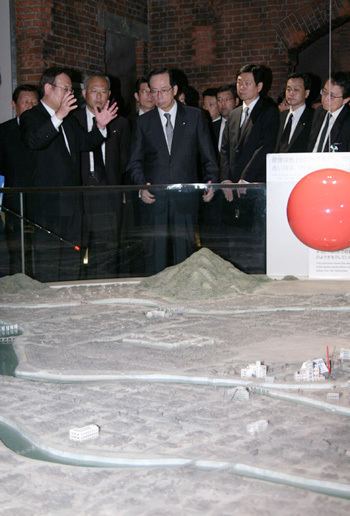Opened 1955 Phone +81 82-241-4004 | Director Koichiro Maeda Architectural style Modern architecture Function Museum | |
 | ||
Established 1955 (62 years ago) (1955)Remodeled 1991 (26 years ago) (1991)Renovated Peace Memorial Hall 1994 (23 years ago) (1994) Website www.pcf.city.hiroshima.jp Address 1-2 Nakajimacho, Naka Ward, Hiroshima, Hiroshima Prefecture 730-0811, Japan Hours Open today · 8:30AM–6PMSunday8:30AM–6PMMonday8:30AM–6PMTuesday8:30AM–6PMWednesday8:30AM–6PMThursday8:30AM–6PMFriday8:30AM–6PMSaturday8:30AM–6PM Similar Hiroshima Peace Memorial, Hiroshima Peace Memorial, Hiroshima National Peace M, Children's Peace Monument, Shukkei‑en | ||
Inside the hiroshima peace memorial museum
The Hiroshima Peace Memorial Museum is a museum located in Hiroshima Peace Memorial Park, in central Hiroshima, Japan, dedicated to documenting the atomic bombing of Hiroshima in World War II.
Contents
- Inside the hiroshima peace memorial museum
- Hiroshima peace memorial museum a day in the life
- Museum content
- Peace education programs
- Access
- References
The museum was established in August 1955 with the Hiroshima Peace Memorial Hall (now the International Conference Center Hiroshima). It is the most popular of Hiroshima's destinations for school field-trips from all over Japan and for international visitors. 53 million people had visited the museum from its opening in 1955 through 2005, averaging over one million visitors per year. The architect of the main building was Kenzō Tange.
Hiroshima peace memorial museum a day in the life
Museum content
According to the introduction in the Hiroshima Peace Memorial Museum's English guide: "The Peace Memorial Museum collects and displays belongings left by the victims, photos, and other materials that convey the horror of that event, supplemented by exhibits that describe Hiroshima before and after the bombings and others that present the current status of the nuclear age. Each of the items displayed embodies the grief, anger, or pain of real people. Having now recovered from the A-bomb calamity, Hiroshima's deepest wish is the elimination of all nuclear weapons and the realization of a genuinely peaceful international community."
To facilitate education, the museum was renovated in 1994 and is now divided into two sections.
The East Wing—the newest addition—explains the history of Hiroshima City before the bomb, development and decision to drop the bomb, the lives of Hiroshima citizens during World War II and after the bombing, and ends with information about the nuclear age and efforts for international peace. Included in this section is a model showing the damage done to the city. It has some important letters exchanged between scientists and top leaders of that era talking about atomic development and predicted result of its use.
The West Wing, which was part of the old museum, concentrates on the damage of the bomb. Sections include Material Witness, which shows clothing, watches, hair, and other personal effects worn by victims of the bomb; Damage by the Heat Rays, a section that looks at what happened to wood, stone, metal, glass, and flesh from the heat; Damage by the Blast, focusing on the destruction caused by the after shocks of the blast, and Damage by the Radiation which goes into details about the health effects suffered by humans.
